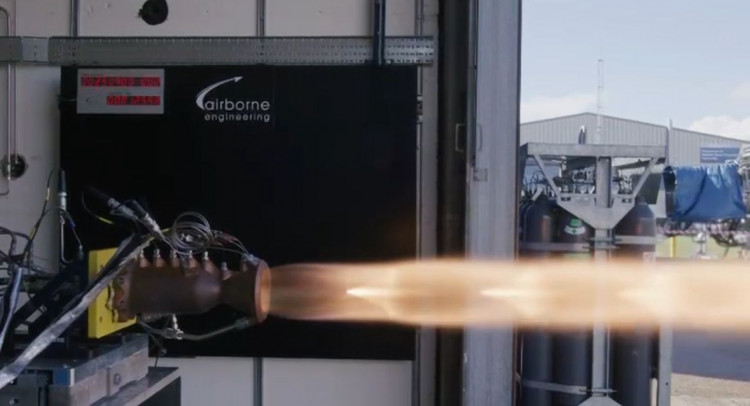Students from Kingston University’s Rocket Engineering team break new national student record with latest engine
By Tilly O'Brien 17th Sep 2025
By Tilly O'Brien 17th Sep 2025

Students from Kingston University's Rocket Engineering (KURE) team recently fired their Egret engine, which they have been working on for several months, at Airborne Engineering Limited at the National Space Propulsion Test Facility at Westcott Space Cluster.
The engine produced a max thrust of 10 kilonewtons, the highest of any non-cryogenic engine produced by a UK University. The engine also had a c* efficiency of 95.6% - which is at the industry standard.

Associate professor in space technology at Kingston University Dr Peter Shaw explained the significance of this achievement.
He said: "This is the culmination of the years of development for the team.
"The Propulsion Test Facility at Roehampton Vale has played a huge part in the team getting to where we are today. It was a fantastic result and there is a really exciting future ahead for the team – placing us on the world map for space technology."
The journey to breaking the record was not a straightforward one. The team had originally planned to fire the engine at the annual Race 2Space Competition in early July, where the team have previously been recognised with an award.
However, an issue with a manufacturer meant the engine was not ready in time. Despite this setback, a group of six students aided by senior technician Kevin Crowley and his team, persevered through their summer holidays to get the engine ready for firing.

As well as the thrust record the engine broke the record for longest duration (15 seconds) and highest ISP achieved with nitrous oxide and isopropanol (215 seconds).
Vinay Williams, president of KURE and an aerospace engineering PhD student at Kingston University explained the journey to breaking the record.
"Egret started out as a personal project to develop a computational technique to optimise rocket engines - I started rocketry around the age of eight and it has always been about trying new things, being unafraid to take risks and learn along the way which I felt this project embodied," she said.
Williams added: "I worked on the engine alone for months before bringing together in a small group from across the rocketry society. Personally, I hadn't set out to break records, in fact I had to be told it had happened.
"It's still a surreal and surprising feeling. I feel proud that the engine now exists as something future teams can learn from and improve."
Vinay worked alongside fellow students George Luker, Anique Crouch, Trish Fratangelo, Simonas Brasas, Abraham De Los Reyes, Valerie Mo and Arun Puri to make the engine.
The next hope for the KURE team is for them to use the engine for a high-altitude rocket and attempt to break the UK amateur record for highest launch.
Businesses interested in sponsoring the project can email Dr Shaw on [email protected] for more information.
CHECK OUT OUR Jobs Section HERE!
kingston vacancies updated hourly!
Click here to see more: kingston jobs
Share:






